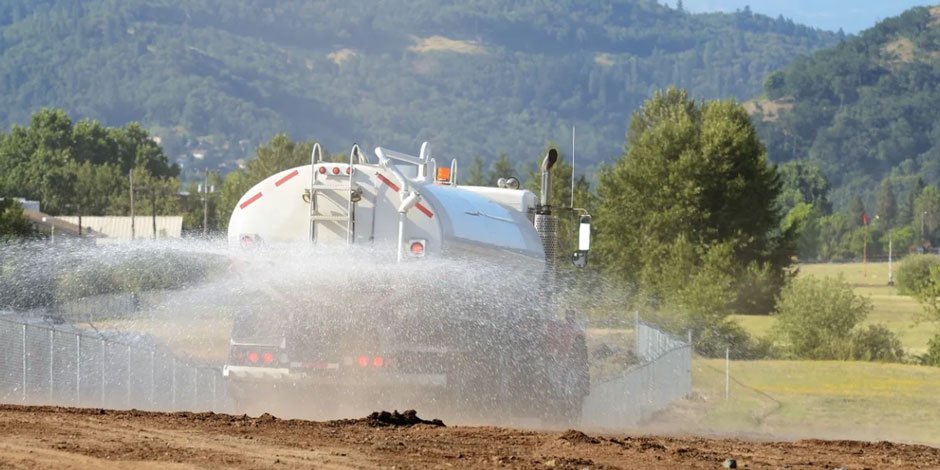Skip to the good bit
ToggleDust can be a big problem, especially on construction sites, unpaved roads, or in dry areas. It can make it hard to see, harm health, and create maintenance issues. Luckily, there are effective ways to manage dust. One effective option is magnesium chloride, which is easy to use and effective for dust control.
Magnesium chloride helps keep dust down by attracting moisture from the air and surfaces. This keeps environments cleaner and safer. People like using magnesium chloride because it is practical, affordable, and easy to apply.
Here’s a guide on how to apply magnesium chloride for dust control.
What is Magnesium Chloride?
Magnesium chloride is a natural mineral found in seawater or salt lakes. It draws moisture from the air, which helps reduce dust. When applied to surfaces, it absorbs humidity, keeping the area moist and preventing dust from becoming airborne.
Using magnesium chloride dust control techniques has several advantages. It is environmentally friendly and can reduce dust without requiring heavy machinery or excessive resources. With a few simple steps, you can create a dust-free zone that benefits both your health and the environment.
How to Prepare and Apply
Before using magnesium chloride, prepare the area first. Check the site where you want to control dust. Remove large debris, rocks, or any other objects that may obstruct the path. Clean the surface to ensure it is free of extra material for a better result.
Magnesium chloride is available in both liquid and solid forms. The liquid form is usually easier to apply and soaks into the soil better. For the solid form, spread it evenly over the area to let it dissolve. If using the liquid, use a sprayer or a hose attachment to wet the area thoroughly. Be sure to cover the surface evenly for the best effect.
Maintaining Dust Control
After applying magnesium chloride, check the area regularly to keep dust under control. The first application typically lasts for several weeks, but weather conditions, such as wind and rain, can impact its effectiveness. Regular checks will help you know when to reapply.
If you see more dust, reapply magnesium chloride using the same method as before. If you have a larger area or ongoing projects, set up a maintenance plan to ensure consistent dust control throughout the season.
Benefits of Magnesium Chloride
Using magnesium chloride to control dust has several significant advantages. First, it helps reduce health risks. Dust storms can cause breathing problems and allergies. By reducing dust, magnesium chloride helps create a healthier environment for workers, residents, and wildlife.
Second, magnesium chloride improves road conditions. It reduces erosion and enhances the quality of unpaved roads. With less dust, visibility increases, making travel safer for everyone. This option is often more cost-effective compared to other dust control products, making it a practical choice for larger areas.
Environmental Considerations
Magnesium chloride is also good for the environment. It has a small ecological footprint. The compound breaks down easily and is not harmful to plants or animals. Unlike other dust control chemicals, it is less likely to pollute groundwater or harm soil health.
Additionally, magnesium chloride is a sustainable choice. It can attract moisture from the air, making it well-suited for natural conditions. By using biodegradable methods for dust control, you help protect both your local environment and the planet.
Cost-Effectiveness of Magnesium Chloride
Magnesium chloride is a cost-effective option for controlling dust. It usually requires fewer resources and less maintenance than other dust suppression methods. Since it reduces dust for a longer time, you won’t need to reapply it as often, which saves time and money. This can lead to significant savings for larger projects or long-term use, making it a smart choice for contractors and property managers who want to stay within budget.
Safety and Health Benefits
Using magnesium chloride for dust control is not only beneficial for the environment, but it also prioritizes safety and health. Unlike some other chemical dust suppressants that can be harmful when inhaled, magnesium chloride is generally safer for people and animals. It helps lower the number of airborne dust particles, which can reduce respiratory problems and allergies related to dust exposure.







